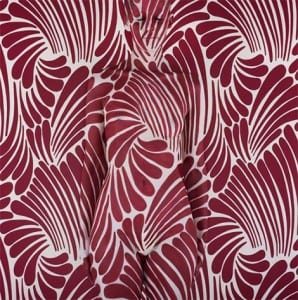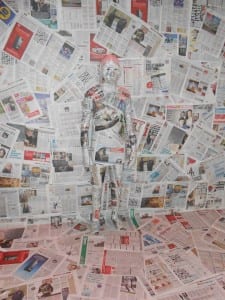The artistic duo, Lone Twin, underwent a project in 1998 entitled Totem. The pair attempted to carry a fallen telegraph pole along a straight line drawn through Colchester’s town centre, around streets of traffic, through shops and homes, with the artists carving into the pole the initials of those who helped complete the journey. In an interview with Christopher Hewitt for the 2004 Brussels kunstenFestivaldesArts, the pair said that they aimed to ‘activate social events through personal trials’ ((Bilateral, (2006), Lone Twin interviewed by Christopher Hewitt. [online] Available at: http://www.lucazoid.com/bilateral/lone-twin-interviewed-by-christopher-hewitt/, [Accessed 10 March 2013] )) . The inclusion of audience within the performance journey itself creates a far stronger response than if they were watching from an auditorium.
This is the motivation behind one of the projects we will be presenting at the Grandstand. The piece is similar to that of a post-mortem discussion. We would have the audience experience all of the performances at the site, which portray the different stories and uses of the stand, and then offer written suggestions as to what they think the space should be used for now. These will be attached to a piece of horse-hair infused twine approximately 800 metres in length, and then carried back to the Lincoln high street with the aid of the audience. The twine will be used prior to this to remap accurately placed and scaled parameters of the demolished stands that were next to the surviving one. We intend for the audience to see the removed stands, to allow them to engage with what the site used to be at full construction. The interview with Lone Twin reveals similar intentions with their work as they ‘create and define the location through physical activity drawing an audience into the possible commonality of the task. It is their commitment to carrying things out, to finding an end to the journey that engenders equal acts of engagement, energising notions of community against often difficult odds’.
The Grandstand was a popular social location for the seasonal races in the past, and we would hope to capture some of that social excitement when exploring the grandstand’s future. By bringing the twine back to the high street for the public and the audience to see, everyone can get an idea for how important the stand was to Lincoln life in the past, as well as how versatile the space is today to cater to many suggestions about what it should become. Through some preliminary research, many suggestions about what the grandstand should be turned into have been made. Popular suggestions include turning the space into a race museum, a horse-racing themed restaurant and a skate park. Though different suggestions all participants asked expressed a keen desire for the stand to become popular once again.



